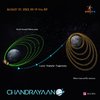As per Physical Research Laboratory's website these payloads are approved for Shukrayaan & Mangalyaan-2 missions

www.prl.res.in
Venus Orbitor Mission
PRL has proposed the following instruments for Venus Orbiter Mission. These instrument have been reviewed by the expert committee and also by the APEX. The following instruments are shortlisted to be flown fly in Venus Orbiter mission.
Venus Orbit Dust Experiment (VODEX)
It is proposed to understand the interplanetary dust flux at Venus and its possible distribution around Venus. There are no measurements of Interplanetary Dust Particles (IDPs) at Venus. The instrument can detect particles of size from few hundreds nm to few µm, travelling at hypervelocity (> 1 km/s). The outcomes can help explain the dust flux at Venus and whether there is any ring around Venus. The study of dust can help explain the RO experiment results.
Lightning Instrument for Venus (LIVE)
This experiment will measure the lightning spectrum and its frequency of occurrence on Venus. There are few measurements which indicate the presence of lightning on Venus however, they are controversial. The lightning gives energy to the atmosphere and the chemistry may be modified.
Venus Radiation environment monitor (VeRad)
To measure the high energy particles entering in to the Venus atmosphere in the energy range of 100 keV to 100 MeV and to study their effects in the enhancement of ionization rates on the Venus atmosphere. This is the first time such measurement will be carried out in the close vicinity. This instrument also aims at measuring the radiation levels en-route to the Venus. The wide dynamic range will be covered will be covered with stack of Si PIN detectors and Scintillator detectors.
Venus Solar Soft x-ray Spectrometer (VS3)
To study the effect of solar X-rays on the Venus atmosphere in the energy range of 1 to 15 keV with high energy resolution and high cadence measurements. No simultaneous measurement of Solar X-ray flux and the electron density has been attempted.
Retarding Potential Analyser (RPA)
In situ investigation of ion densities (O2+, O+, CO2+ and H+) and the plasma temperature of the upper atmospheres. This instrument is being developed by IIST and PRL is responsible for data analysis and science.
Venus Neutral and Ion Mass Analyzer (VENIMA)
To measure the composition, structure, variability and the thermal state of the Venus atmosphere and its dynamics by measuring the ions and neutrals with mass resolution of >100 from the orbiter satellite. Discussion with SPL/VSSC is underway to explore the facility of combining the developments both at PRL and SPL.

www.prl.res.in
Mars Orbiter Mission-2
PRL has proposed and developing the following instruments for second Indian Mars Orbiter Mission (MOM-2). These instruments have been selected for MOM-2 and are at various stages of the development.
Mars Orbit Dust Experiment (MODEX)
To understand origin, abundance, distribution and flux at high altitudes on Mars, a MODEX is proposed. There are no measurements of Interplanetary Dust Particles (IDPs) at Mars. The instrument can detect particles of size from few hundreds nm to few µm, travelling at hypervelocity (> 1 km/s). The outcomes can help explain the dust flux at Mars, whether there is any ring (as hypothesized) around Mars and also confirm whether the dust is interplanetary or coming from the Phobos/Deimos. The study of dust can help explain the RO experiment results.
Radio Occultation (RO) Experiment
To measure the neutral and electron density profiles, the RO is proposed. The instrument is microwave transmitter (or receiver as per option) on board, operating at X-band frequency and it can provide the bending angle due to the Martian atmosphere. It can help understand the behaviour of the Martian atmosphere.
Energetic Ion Spectrometer (EIS)
To characterize SEPs and supra-thermal solar wind particles at the Martian environment and to understand their role in the loss of Martian atmosphere. This instrument will measure high-energy charge particles in the energy range of 20 keV to 20 MeV.
Langmuir Probe and Electric Field Experiment (LPEX)
To measure electron number density (Ne), electron temperature (Te), electric field waves in order to understand the Martian plasma environment. LPEX experiment consists of one Langmuir probe (LP) and two electric field (EF) sensors each mounted on a long boom.

